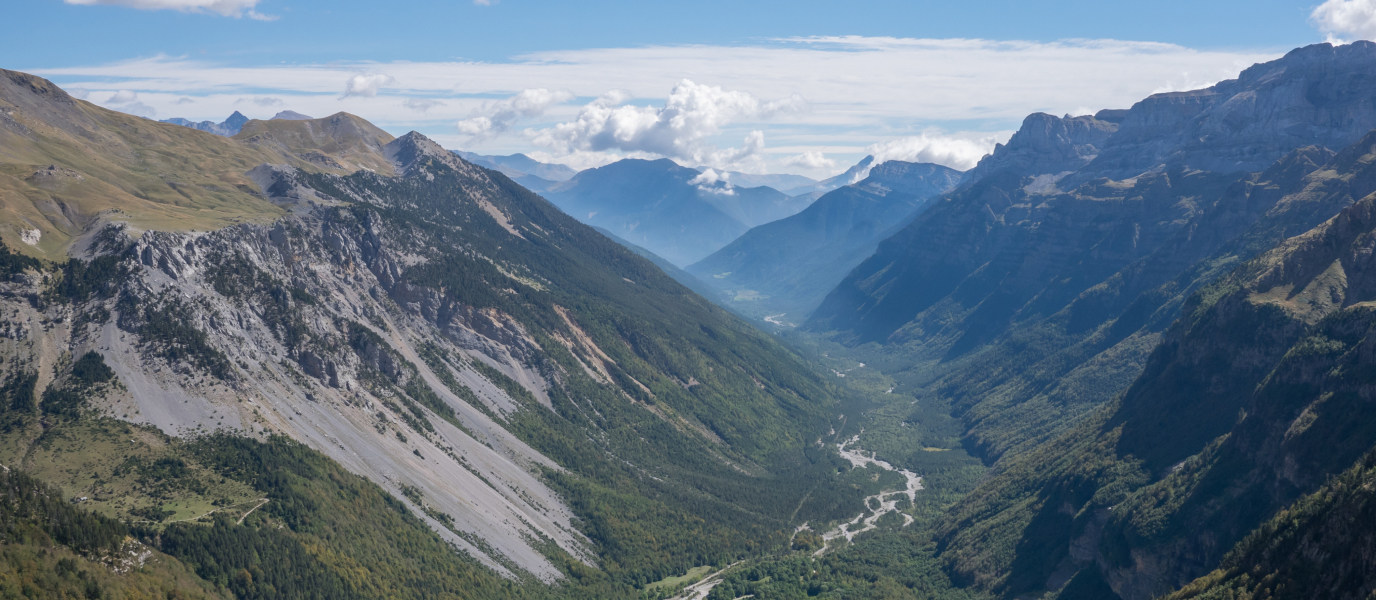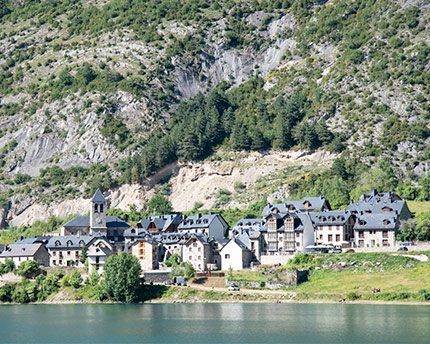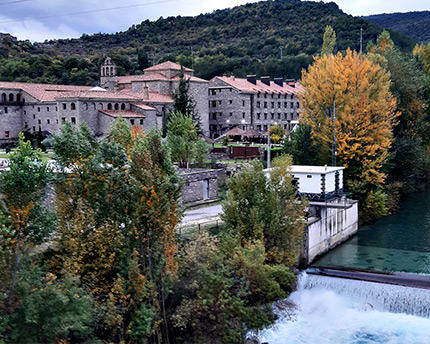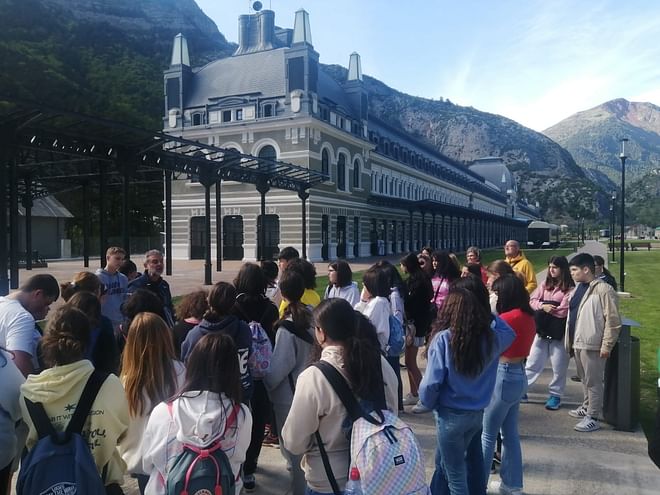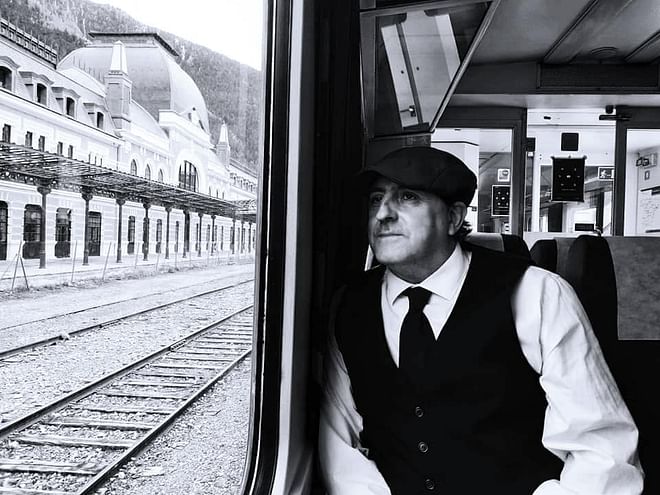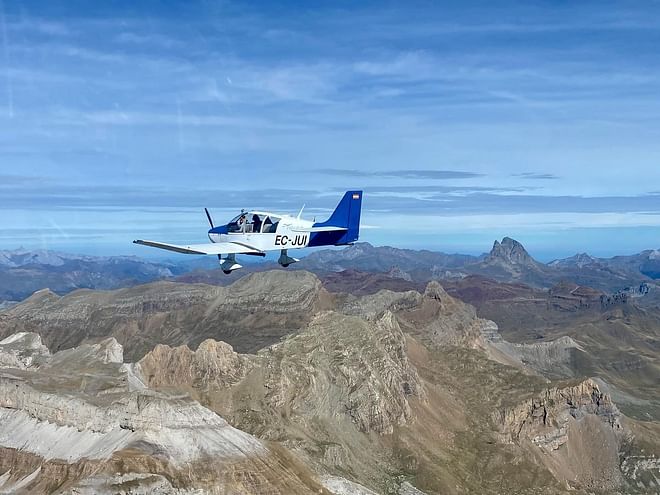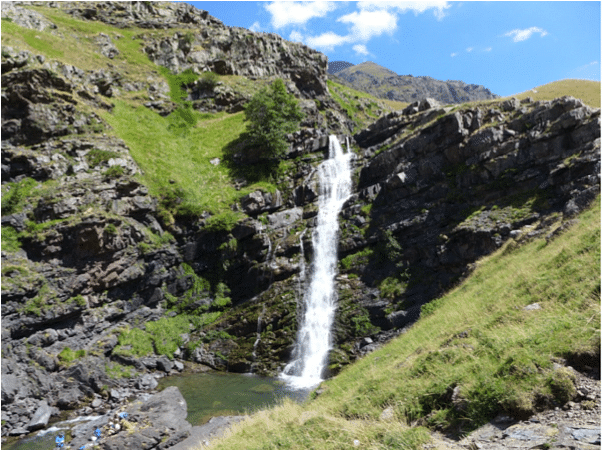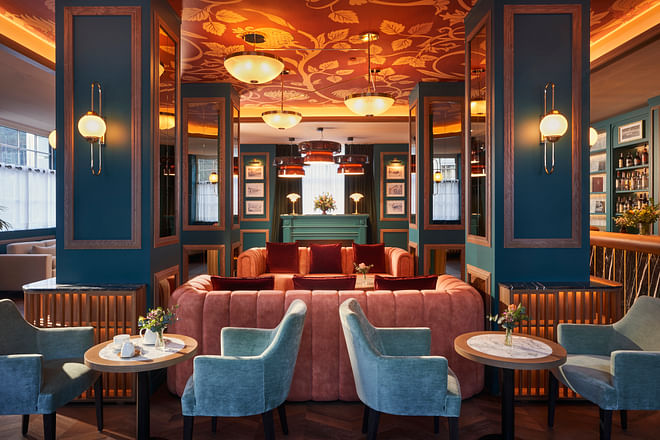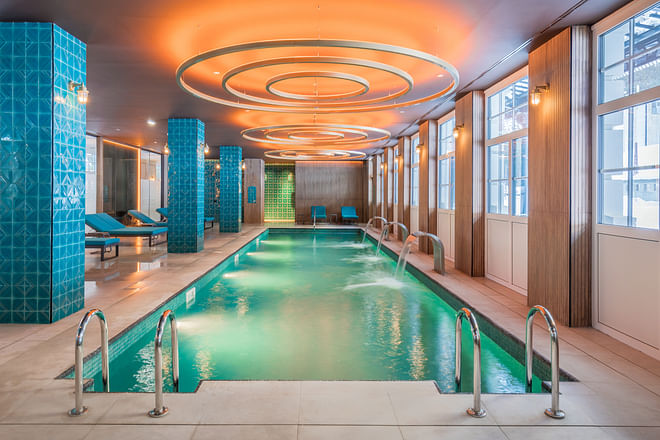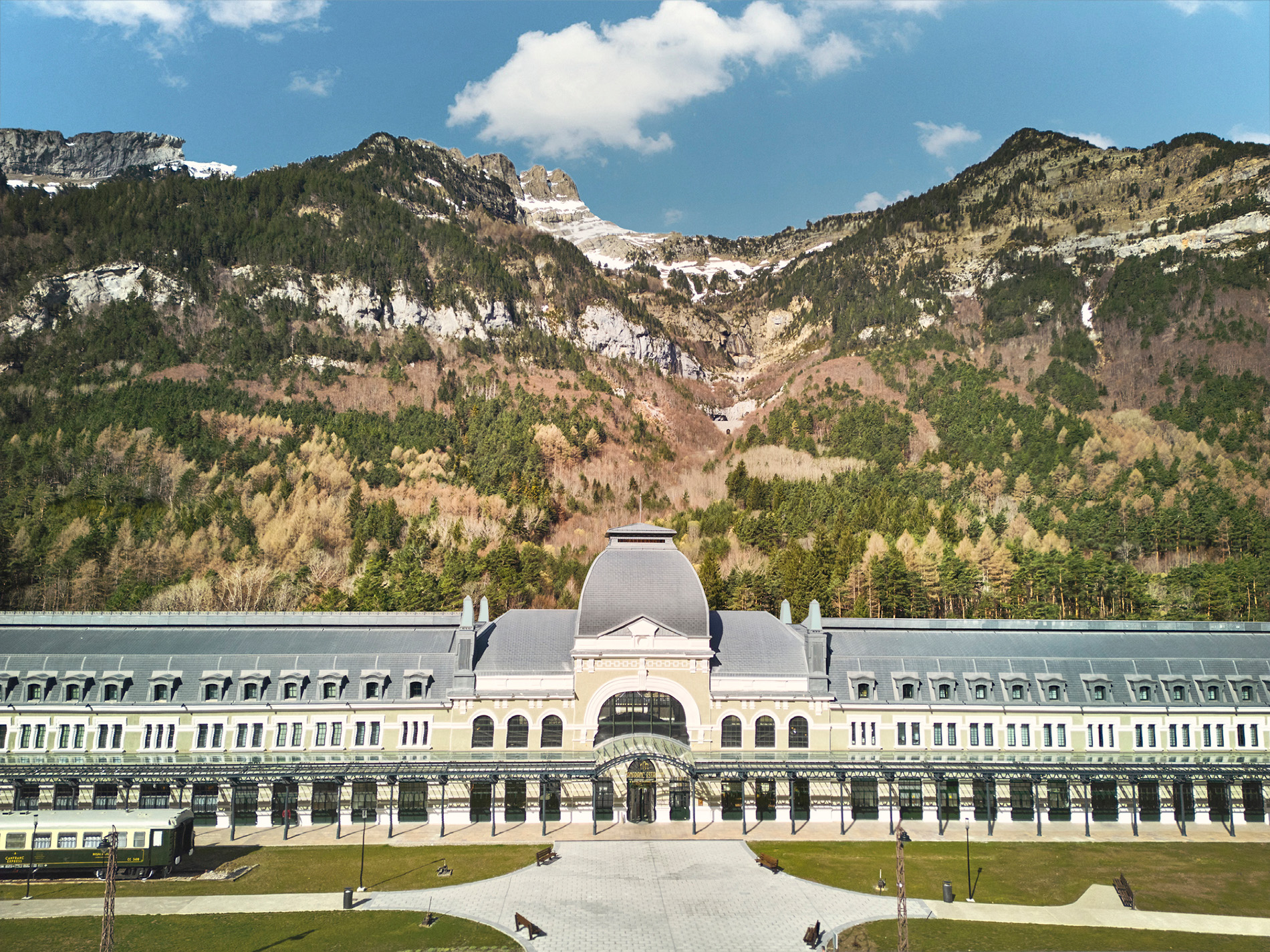The Pyrenean village of Torla, or Torla-Ordesa as it has been known since its name change in 2014, is the last centre of population we find before crossing the frontier with France. Torla is regarded as the gateway to the spectacular Ordesa y Monte Perdido National Park, a protected area of 15,000-hectares which is home to an abundance of Pyrenean flora and fauna, and a place where tourists will find a large number of hiking trails.
Bathed by the icy waters of the river Ara, and watched over by Mondarruego [red mountain in English], so called because of the reddish colour of its peak at sunset, the historic centre of Torla holds some of the best examples of the Alto Aragón [Upper Aragon] area’s typical architecture. Apart from the San Salvador church, and the remains of the medieval castle (which now houses the Ethnological Museum), Torla’s charming streets have an abundance of historically important ancestral mansions. The icing on the cake is the town’s bars and restaurants, where visitors can try traditional Aragon Pyrenees cuisine. Below, we tell you what to see and where to eat in Torla.
The rich history of Torla
One of the things that most surprises visitors to Torla is the folklore and ethnographic traditions that permeate the town to this day. It is not surprising, however, if we take into account the geographical isolation experienced down the centuries by these towns and villages located in deep glacial valleys. What could be seen as a disadvantage in terms of location is counterbalanced by the area’s scenic beauty, its mountain peaks (many of which exceed 3,000 metres in height), and lush woodland that clothes hillsides and valleys alike in rich green. As the saying goes, every cloud has a silver lining.
The medieval spirit that survives in Torla is also due to its long history, evidence of which can be seen in its modest, but well-preserved, architectural heritage. The village’s name is derived from ‘torre’, the Spanish word for ‘tower’, which gives us a clue as to Torla’s history. Where its oldest buildings (the castle and the church of San Salvador) are to be found today, there stood, long ago, a defensive tower built to repel the continuous attacks from French invaders seeking dominance over the region. An interesting fact: it is said that the military feats of the people of Torla earned the village the honour of being called a ‘villa’ during the sixteenth century.
During the seventeenth century, when the village enjoyed a period of exceptional prosperity thanks to the growth in trade and flourishing contraband activity, Torla’s historic quarter saw the construction of most of the ancestral mansions found there today. Unfortunately, the vast majority of them appear to have been rebuilt, in response to damage suffered during various wars: firstly the War of Succession, then the War of Independence and finally, the Civil War.
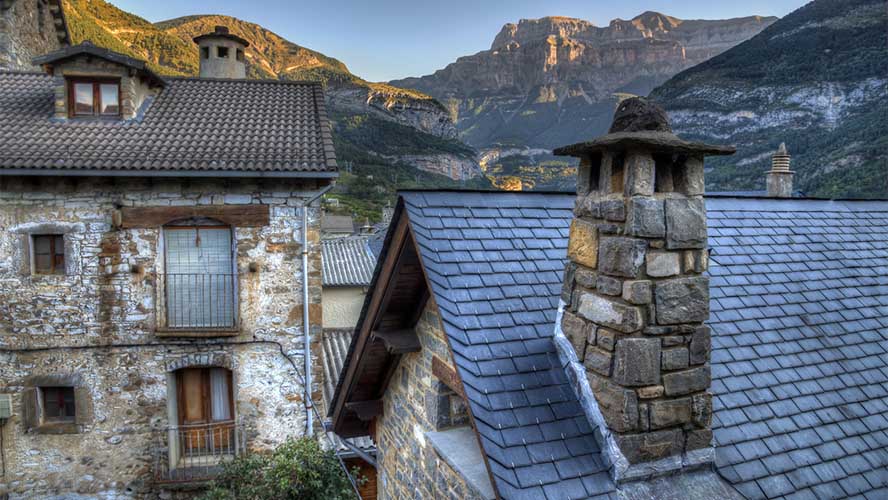
What to do in Torla
Plaza Mayor [Main Square] and the town centre
Without a doubt, the best way to get to know Torla is by strolling around the streets of its historic quarter, which still retains something of a medieval air. They are all crammed with details it is worth learning about in advance so that, once we are there, we don’t miss anything.
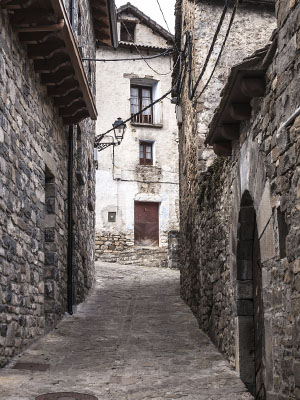
For example, there are the famous ‘witch-scarers’, old chimneys crowned with cone-shaped stones, whose main purpose was to prevent these particular mythical beings from entering the houses. Similarly, we can scan the façades of the more humble houses for what are known as ‘tizoneras’, projecting stone cornices to disguise the exact position of the fireplace.
Much of the interest in Torla’s centre can also be found in its steep, narrow streets, its mansions built from stone and slate, and the craft shops hidden on every corner. Then there are its ancestral mansions, whose majestic façades display what are known as infanzones, stone coats-of-arms granted by the King to noble families of the age. Currently, the only one of these mansions open to the public is the Casa Rubla.
Any stroll around the centre of Torla will end in the Plaza Mayor, [Main Square], a small space dominated by the town hall, the village’s social hub since at least the thirteenth century.
Church of San Salvador
Another important piece of Torla’s historical heritage is the parish church of San Salvador, a building dating from the sixteenth century, whose location on top of a crag (with the peak of Mondarruego in the background) explains its inclusion in virtually every postcard of the village. Next to the church can still be seen the remains of an old defensive complex, possibly a castle. Today it is home to the Torla Ethnological Museum, an interesting collection of items linked to the daily life of the village, and to altarpieces recovered from abandoned towns in the area. Also open to visitors is the mysterious crypt, the Cripta de San Jorge, the discovery of which, in the late twentieth century, allowed experts to recover valuable medieval murals dedicated to the saint.
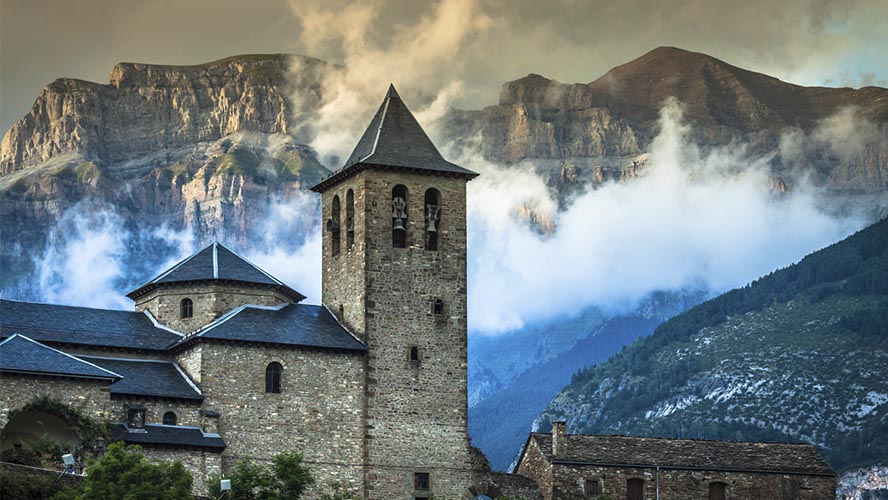
Ordesa y Monte Perdido
The Ordesa y Monte Perdido National Park is, in short, a Pyrenean fairytale come true. This protected space, a Biosphere Reserve since 1988, and a World Heritage Site since 1997, covers an area of 15,000 hectares characterised by scenery of truly astounding beauty. The river Ara, the only entirely pristine river in the whole of Spain, has its source in the depths of the valley of Ordesa, surrounded by towering peaks and immense gorges. Moreover, Ordesa is the ideal setting for all kinds of sporting activities: rafting, climbing, canyoning, hiking, mountain biking, etc.
Before immersing ourselves in this vast, natural space, it is worth calling into the park’s visitors’ centre, situated in the village of Torla itself. This has an exhibition space, divided into three sections, which gives a useful insight into the flora and fauna to be found in the Park. Two of the most outstanding hiking trails, which differ considerably in their degree of difficulty, are described below. One is a hike of 16 kilometres in total, which climbs up to the Cola de Caballo waterfall. This is an easy hike, and definitely the more suitable for families with children. The second route, much more technically and physically demanding, is the one leading to the peak of Monte Perdido (3,355 metres). Taking a total of around 12 hours, this trail becomes considerably more difficult after you pass the Refugio de Goritz (at 2,200 metres). The Refugio is frequently used as an overnight stopover by hikers who prefer to undertake the route over two days.
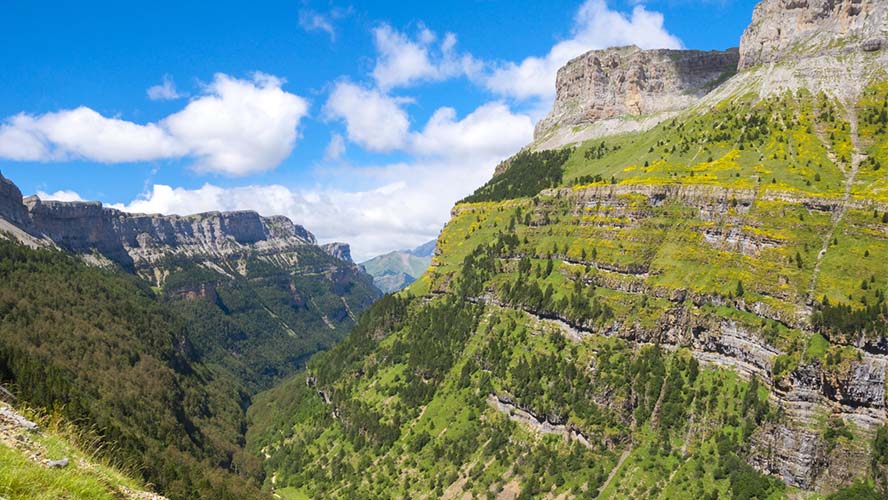
Eating in Torla
Although Torla has no more than 300 inhabitants, its historic quarter has a number of bars and restaurants catering for tourists. We can recommend two of these: on the one hand, there is La Cocinilla (Calle Fatás, no number), a restaurant located in an old mansion and offering traditional cuisine. The menu includes certified Broto Valley beef. Alternatively, it is worth looking in on Restaurante L’Atalaya, a friendly establishment near the main road, offering both a menú del día [fixed-price menu] and raciones [larger servings of tapas]. It is well worth trying the roast lamb marinated in spices, and the pears in wine with cinnamon as a dessert.
Useful information
- How to get there:
- By car (from Zaragoza): follow the E-07 as far as Huesca, then the A-23 until Sabiñánigo, then the N-260. A distance of 170 Km, 2 hours 15 mins.
- By train: with the RENFE service as far as Sabiñánigo.
- By bus: with the Avanzabús company.
For further information about services and opening hours, we recommend you visit Torla-Ordesa town council’s official website.



































































